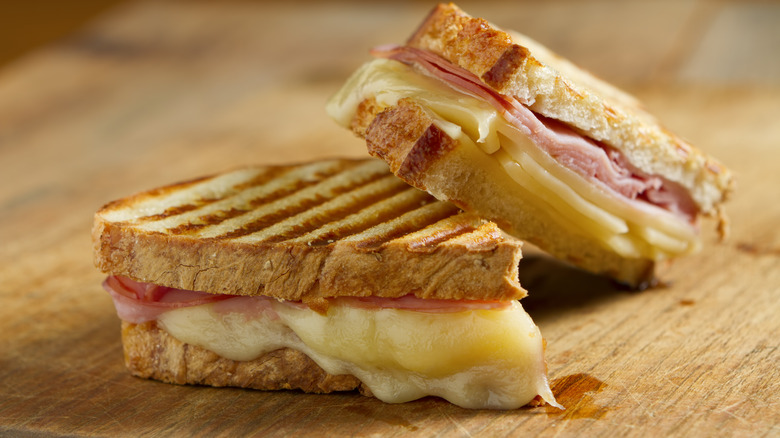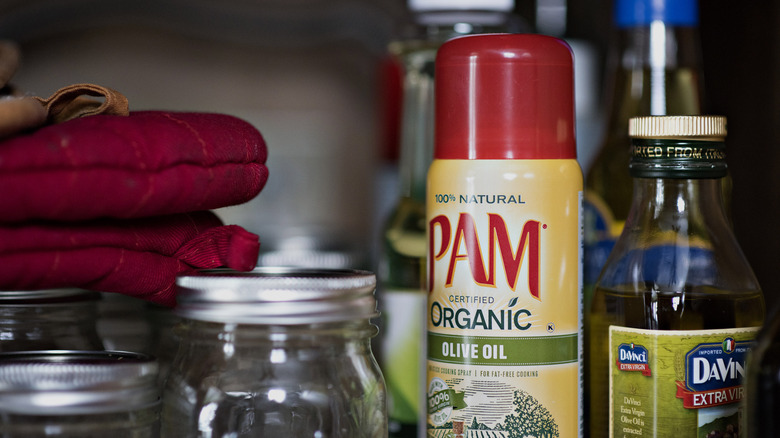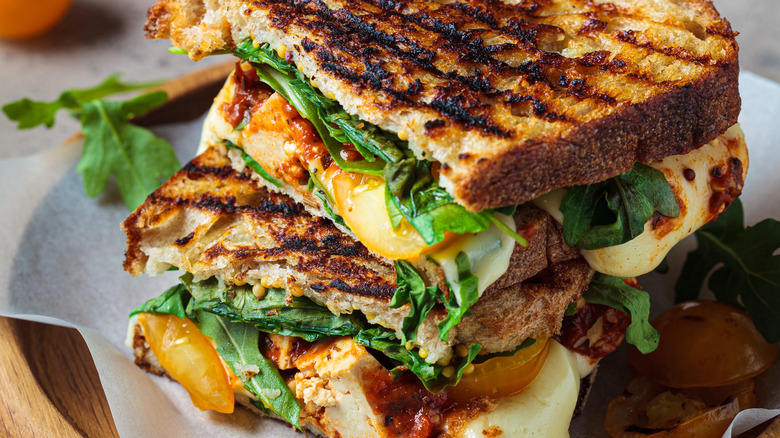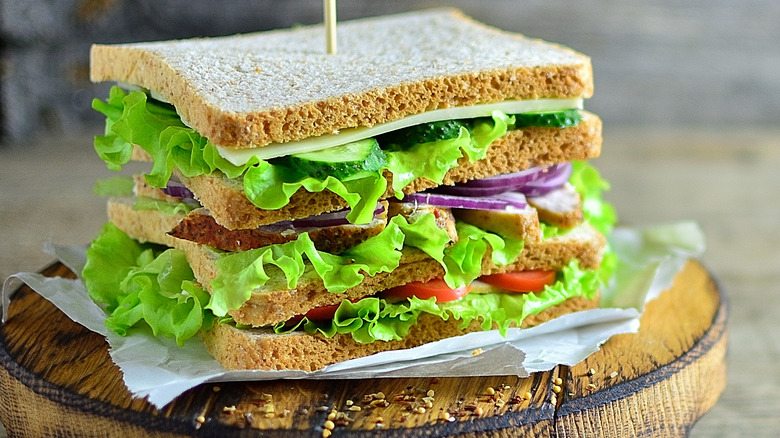The Key Tips For Making An Extra-Crispy Panini
The panini press is the ultimate appliance to add smokiness and texture to your next sandwich, applying heated grill grates and pressure to achieve charred marks on the surface that are just picture-perfect. However, while toasting bread adds the ideal crunch, it needs the help of additional ingredients to reach the level of crispiness that is oh-so-satisfying and resembles a crostini. That being said, a simple coating of fat on the hot grates of your panini press does more than just prevent your sandwich from stubbornly sticking, it lends a melt-in-your-mouth texture.
Furthermore, if you find that your sandwiches often turn out soggy or tend to transition that way the longer they sit, it's best to look at certain ingredients you're putting inside your sandwich, and where exactly you're placing them, which can, unfortunately, alter the exterior texture. Let's dive into both of these tips to ensure you turn your next sandwich into panini perfection.
Grease your grates
Level up the crispiness of your next sandwich by coating the hot grates on your panini press with a drizzle of olive oil or a brushing of melted butter. This takes your panini from toasted to the crispy texture of a crostini. To achieve the same results sans the calories, you can actually use nonstick cooking spray or butter-flavored spray, as this will distribute minimally but provide an even coating. Furthermore, you can coat the bread instead of the grates, as this is a good route to take to prevent burning yourself on the powered-on panini press.
It's important to wipe the grates clean in between each sandwich if you're cooking for multiple people, as each batch can lend burnt bits that won't translate well onto the next one. Once the grates are clean, continue distributing your fat of choice, and cooking your sandwiches until toasted to your liking.
Don't include soggy ingredients
While including a slice or two of cheese into your sandwich before it hits those hot grates is probably one of the best things you can do, as it turns ooey gooey and lends the most satisfying cheese pull, there are some ingredients that don't benefit from getting heat exposure. Ingredients with high water content such as tomatoes, roasted peppers, pickles, lettuce, certain types of meat, and fish, release moisture when cooked. Does this mean you can't include them? Not at all.
Instead of taking away some of your favorite sandwich add-ins, let's alter them. If you're a tomato lover, to optimize them in your next panini, simply remove as many of the seeds as you can before placing it between the bread. You can also salt them to remove the extra moisture. Simply sprinkle slices of tomatoes with salt and let them sit until they release their water, at least 10 minutes. From there, just drain them on paper towels, patting the tops dry. For roasted red peppers, pickles, or sauerkraut, it's best to transfer them to a strainer and let them sit for a bit to fully drain their juices and excess liquids. For meats and fish, a slight dust of panko breadcrumbs all over the surface will do the trick, as the breadcrumbs will soak up the moisture before the other ingredients, acting as a barrier.
Layer your ingredients
One last tip that is a real savior for lettuce, and you can do this with any of the high-moisture ingredients mentioned, is placing them in the center of the sandwich, with the other ingredients that aren't bread or condiments surrounding it. The surrounding ingredients will act as a barrier to take on that excess moisture, so that the bread is protected, staying crisp for longer.
Furthermore, while we love condiments, this goes hand-in-hand with applying them as well. It's second nature to spread your Dijon mustard or mayonnaise onto your slice of bread, as that is the perfect vehicle for getting even coverage. However, while it will flavor brilliantly and allow your sandwich to hold up for a short bit, after some time, it will cause a slight sogginess that is undesirable. It may feel strange, but it's best to place your condiments onto an ingredient that will be in the center of the sandwich.



